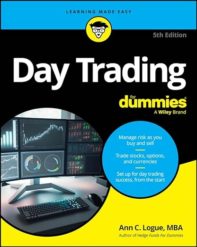Many people are astonished to find out that Chicago has a huge Latinx population, given that it’s far from the southern border and the weather is, well, a bit different than that of Mexico. Brown in the Windy City: Mexicans and Puerto Ricans in Postwar Chicago (Historical Studies of Urban America)
by Lilia Fernandez is an academic book that offers some perspectives on how Mexican immigrants found their way to Chicago and made their lives here in the wake of World War II.
Essentially, there were two groups of Mexican migrants who came here in this era. The first were workers recruited in Mexico for work to here to support the war effort under the Bracero program, a series of agreements between the US and Mexican government that allowed people in Mexico to move to the US to work. Most of the jobs were in agriculture, which brought people to the Midwest; some were with the railroads and manufacturing, which brought people specifically to Chicago. Mexicans continued to come to the US to do agricultural work through the Bracero program into the 1960s; as the largest city in the Midwest, Chicago attracted many of those who came to work in the fields but preferred urban life.
Another group of Mexicans that came to Chicago, mostly after the war, were Tejanos: Mexican citizens and people of Mexican descent who worked in Texas. Along the lines of the Great Migration of African-Americans, many Tejanos left the rural South for manufacturing jobs in Chicago, joining the Braceros and pre-war Mexican immigrants as well. The migration from Mexico has continued due to an ongoing need for low-wage labor in the United States and persistent political and economic problems in Mexico.
Much of this book explores the relationships among Mexican immigrants, Puerto RIcans (who were recruited to work in factories, an easier process than recruiting Mexicans as Puerto Ricans are US citizens), and the European-Americans and African-Americans who also lived in Chicago. As their ethnicity didn’t fall into the neat classifications of “white” or “black”, Mexicans and Puerto Ricans sometimes found themselves serving as buffers to neighborhood change. They would be more accepted by the dominant European-Americans than African-Americans, but they weren’t fully accepted. For example, many Roman Catholic parishes had been formed to serve specific language and ethnic groups; although most Mexicans and Puerto Ricans who moved to Chicago were Roman Catholic, they were not welcome in many parishes.
The last chapter of the book is dedicated to the founding of Mujeres Latinas en Acción, an organization founded by Mexican and Puerto Rican women in Chicago to provide support for the interests of women and girls. For example, many community groups in Latinx neighborhoods offered athletics and job training activities for boys and men, but they didn’t have similar activities for girls and women. Also, there were some gendered issues, such as domestic violence and healthy childbirth, that were not being addressed at all by existing organizations. By placing “Latina” in its name, the founders wanted the organization to represent the needs of multiple generations of people who had roots in Spanish-speaking countries rather than advocating only for recent immigrants or only for Mexican-Americans. The organization is more than forty years old and continues to serve the Chicago community.



